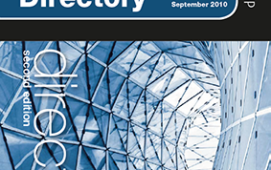I never thought I’d be saying this, given the glacial pace of change in this particular sector of the market, but it seems that corporate actions has been the talk of the town recently. Not only has the DTCC been forging ahead with its plans for XBRL and ISO, reported in last month’s issue, but Swift has also been busy promoting its self-testing service for corporate actions messaging, STaQS, as well as contemplating its possible future involvement in the tax processing and class actions areas.
Swift corporate actions experts Max Mansur and Linda Bookheim took time out to discuss the initiatives that they have been involved in over the last 12 months and their plans for the near future – see this month’s lead story for more details. Following our lead story last month about the DTCC’s plans to spearhead a campaign for semantic interoperability between ISO and XBRL the US market, I also decided to ask around and find out what the general industry perceptions were of this idea.
For the most part, people seemed to be keen on the idea of forging compatibility between the two standards. For example, Amy Harkins from BNY Mellon said that introducing the XBRL protocol into the DTCC infrastructure would likely allow issuers and agents greater scope and capability in transmitting data consistently. Moreover, when this is coupled with the ISO format, it will likely provide the end user with cleaner, less ambiguous data as it will be in the appropriate format required by the standards of both messaging protocols, she explained. Edwin De Pauw from Euroclear likened the process of incorporating ISO standards into XBRL to an exercise that Euroclear went through around three years ago.
The aim of the Euroclear project was to standardise automated corporate actions flows across its markets but in some markets, like the UK, ISO messaging was not rich enough to accommodate the proposed pan-European standard and so it had to be modified in a similar process to the DTCC’s proposals. However, when asked to reflect on whether XBRL will gain traction in Europe as a result, De Pauw felt that market participants would probably stick with ISO. “I am not expecting XBRL to become a standard in Europe for corporate actions. But obviously, with so many US financial firms operating in Europe, we could see the coexistence of the two standards and this is why interoperability between the two is so important,” he said.
Regardless of the progress being made on the standardisation front, it has not been a good start to the year for many of the corporate actions processing vendors. For example, Broadridge’s Securities Processing Solutions reported a decrease of 4.3% in third quarter net revenues on the previous fiscal year in May, and Corero’s financial services division had an even worse time of it, with division revenues down overall for the first half of this year by 28.1% on last year’s figures for the same period.
It seems that despite all the sound and fury going on in the background, spending on vendor solutions for the corporate actions space has tailed off as the industry faces up to the ongoing economic crisis. It will certainly be interesting to talk to these vendors at Sibos in to see how they aim to overcome these barriers and potentially reposition themselves in the market. To that end, Sibos will also give Reference Data Review the opportunity to finally track down a representative from the back office division of Thomson Reuters, who so far this year has managed to elude us. Given that countless phone calls and emails have not worked, perhaps a bout of doorstepping is in order?
Subscribe to our newsletter




